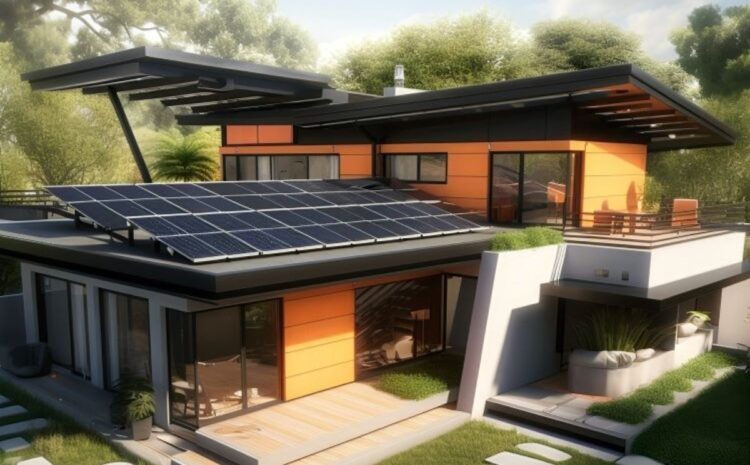
How to design a low maintenance and sustainable home in India (2024)
How to Design a Low Maintenance and Sustainable Home in India (2024)
Table of Content
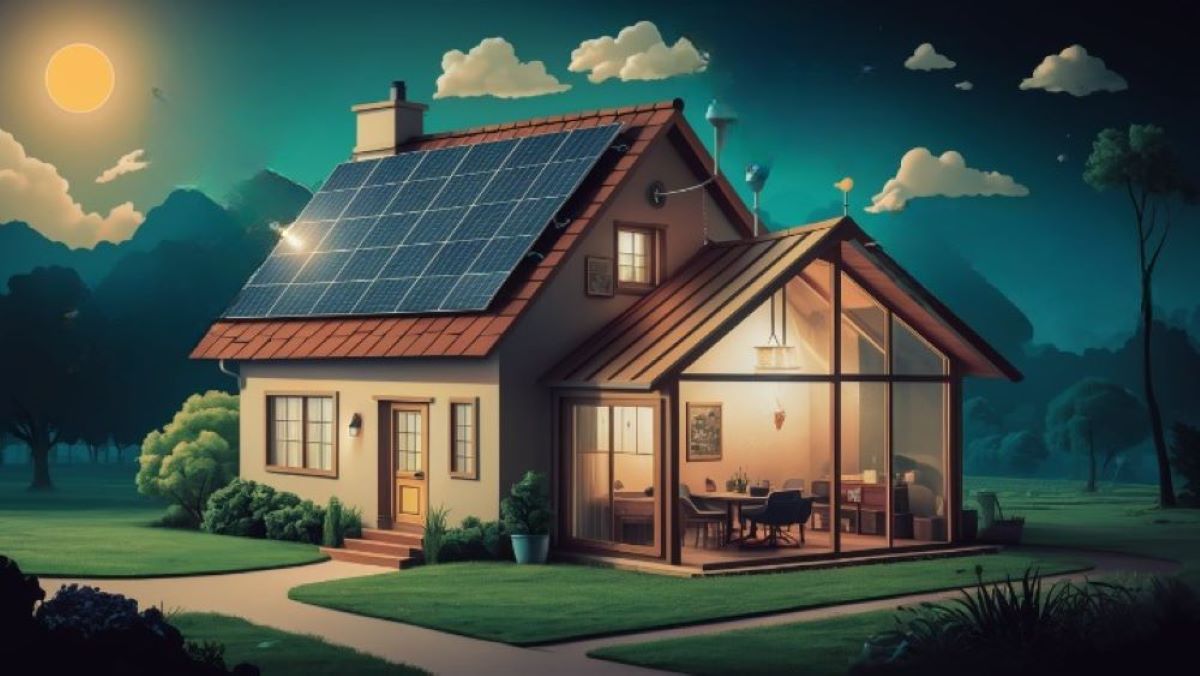
Designing and building a low-maintenance and sustainable home in India is a challenge for many reasons. To achieve both, we must be aware of the options we have and the costs involved in getting it done. Let’s break it down into two parts: first, how to design a low-maintenance home and second, how to design a sustainable home.
Designing is the major challenge when it comes to building a home that is eco-friendly and does not require much maintenance. But I have seen that low-maintenance houses often cost less, whereas sustainable houses demand upfront investment, though in the long run, you get much more than the investment.
Now, let’s deep dive into how to design a low-maintenance house first, and then we will include options that we currently have to make that house sustainable.
How to design a low maintenance house?
Let us first understand what it means when we say a “low-maintenance” house. A simple definition would be that while living in your home or villa, you don’t need to worry about its daily operation, and you don’t need professionals to fix things too often if something breaks or isn’t working properly.
Imagine you’ve recently moved into your newly built house, and after a few months, you find a major design issue that prompts you to consider hiring experts to fix it. On the other hand, consider a situation where you’ve been living in a house for many years, and it hasn’t required any professional intervention or renovation, even after decades.
My job through this article is to help you design a house that won’t require maintenance for years to come.
Design a low maintenance plumbing, hvac and electrical systems.
I have noticed that in many houses that are not designed or built well, there are major problems with either plumbing, air conditioning (HVAC), or electrical systems. If we design and then build these systems properly, we will truly have the home of our dreams; otherwise, it could turn into a nightmare.
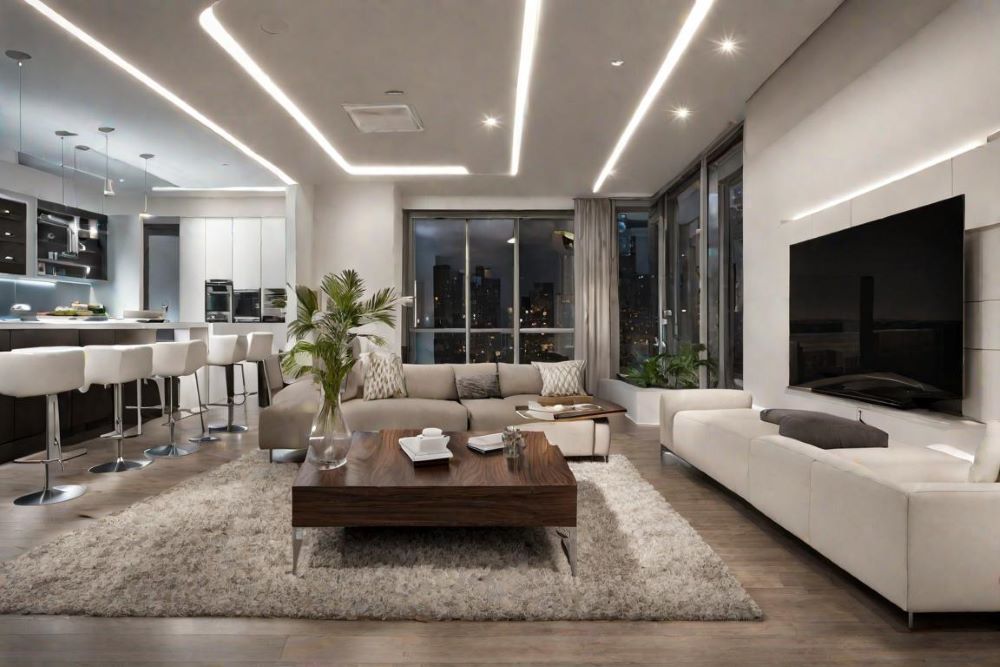
Designing Low maintenance plumbing system
When we start designing any service, we must design a system that is easy to execute, even if the system is relatively new. Drawings and details should be shared in detail, and the technology or expertise required to build entire system and to fix any problem should be easily available. And usually, a system that is easily available is also cost-competitive.
If labor, material, and technical know-how are easily available, we can get a low-cost system.
1. Use high-quality materials: Invest in durable materials such as CPVC. I don’t recommend copper, stainless steel, PE-AL-PE multi-layer composite or PEX piping due to cost or lack of skilled manpower.
2. Install concealed stop cock/valves: Place concealed stop/shut off valves at key points in your plumbing system, such as under sinks and behind toilets, to easily isolate any leaks or repairs that may be needed. This is very important point as in India no one does it and not even aware of this.
3. Use low-flow fixtures: Install low-flow faucets, showerheads, and toilets to reduce water usage and prevent unnecessary strain on your plumbing system.
4. Regular maintenance: Schedule annual inspections and maintenance checks with a plumber to catch any potential issues before they become costly repairs.
5. Invest in good quality CP fixtures and Sanitary ware. I have experienced that many times we buy really expensive and high-quality fixtures and sanitary ware but smallest piece like extension nipple of low quality will lead to leakages. So, always invest in good quality material only.
6. Avoid chemical drain cleaners: Instead of using harsh chemical drain cleaners that can damage your pipes, opt for natural alternatives such as baking soda and vinegar or call a professional plumber for tough clogs.
7. Build manholes or traps with quality material and waterproof them properly so that these don’t leak. Also, build these on well compacted or stable base only. I have seen manholes sinking with time because base was not compacted properly.
Designing Low maintenance home electrical system

When designing an electrical system, simplicity should be our guiding principle. Rather than opting for complicated wired home automation, we should prioritize the use of wireless systems.
Furthermore, during execution, it’s essential to ensure that wires are properly marked. This ensures that any faults can be quickly and easily addressed.
1. Use LED light fixtures: LED lights are energy-efficient and have a longer lifespan, reducing the need for frequent bulb replacements. LED lights are most sustainable option for lighting.
2. Install smart home technology: Smart home devices can help you monitor and control your energy usage, making it easier to identify and address any issues in your electrical system. But suggestion will be to use wireless system as that can be installed & maintained easily.
3. Use surge protectors: Surge protectors can help protect your electrical devices from power surges, reducing the likelihood of damage and the need for replacements.
4. Opt for high-quality electrical components: Investing in high-quality electrical components, such as outlets, switches, and wiring, can help prevent issues and reduce the need for maintenance or repairs.
5. Keep your electrical system organized: Labeling and organizing your electrical system by using colored plastic ferrules that make it easier to locate and address any issues that may arise, reducing the time and effort required for maintenance.
6. Schedule regular inspections: Having a professional electrician inspect your electrical system on a regular basis can help identify any potential problems before they become larger issues, reducing the need for extensive maintenance or repairs.
7. Properly ventilate your electrical system: Proper ventilation can help prevent overheating and reduce the risk of electrical fires, ensuring that your system remains in good working order with minimal maintenance required.
Designing Low maintenance HVAC system
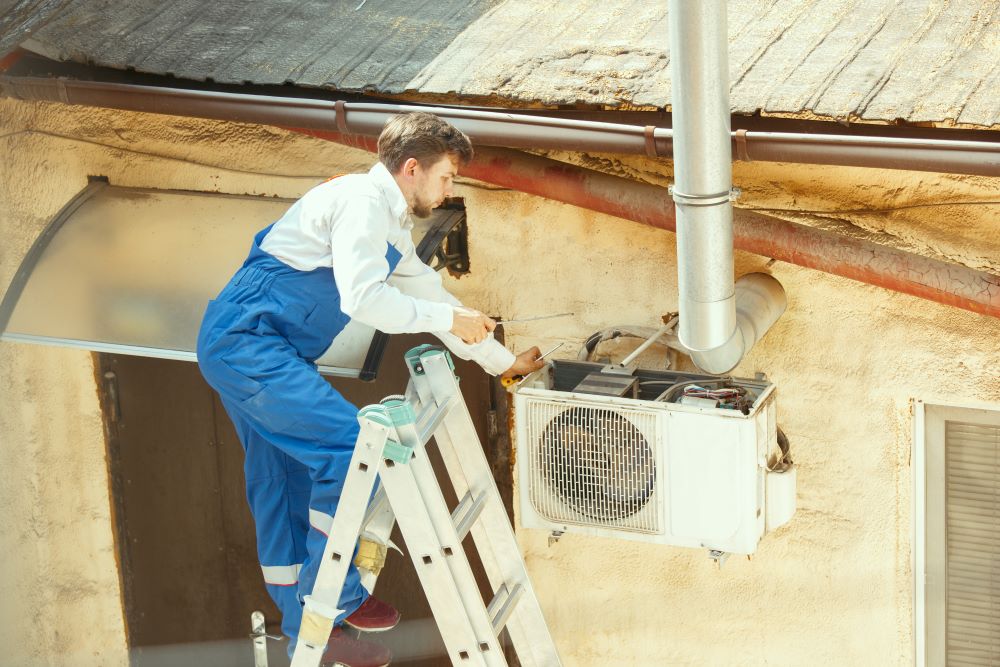
When discussing HVAC system design, it is imperative to utilize the latest and most energy-efficient units. The low side of the HVAC system, which includes piping and ducting, has remained largely unchanged for many years. However, HVAC indoor and outdoor units have evolved over time.
1. Choose energy-efficient equipment: Select HVAC systems with high efficiency ratings to reduce energy consumption and lower maintenance costs over time for ex. Inverter or Variable Refringent Volume (VRV) systems.
2. Implement regular maintenance checks: Schedule periodic inspections and maintenance to ensure that all components are working efficiently and identify any potential issues before they become major problems.
3. Opt for programmable thermostats: Install programmable thermostats that allow users to set schedules for heating and cooling based on their daily routine, reducing unnecessary energy consumption.
4. Ensure proper insulation: Properly insulate ductwork, copper pipes and seal any gaps to prevent air leaks and increase energy efficiency.
5. Clean vents and filters regularly: Regularly clean vents and filters to ensure proper air circulation and prevent dust and debris from building up in the system.
6. Consider zoning systems: Zoning systems allow for different areas of the building to be cooled independently, reducing energy waste and increasing comfort.
7. Use smart technology: Implement smart technology that can monitor and adjust the HVAC system based on occupancy levels and weather conditions to optimize energy efficiency.
Home’s Architecture and Interior Design for Easy Maintenance
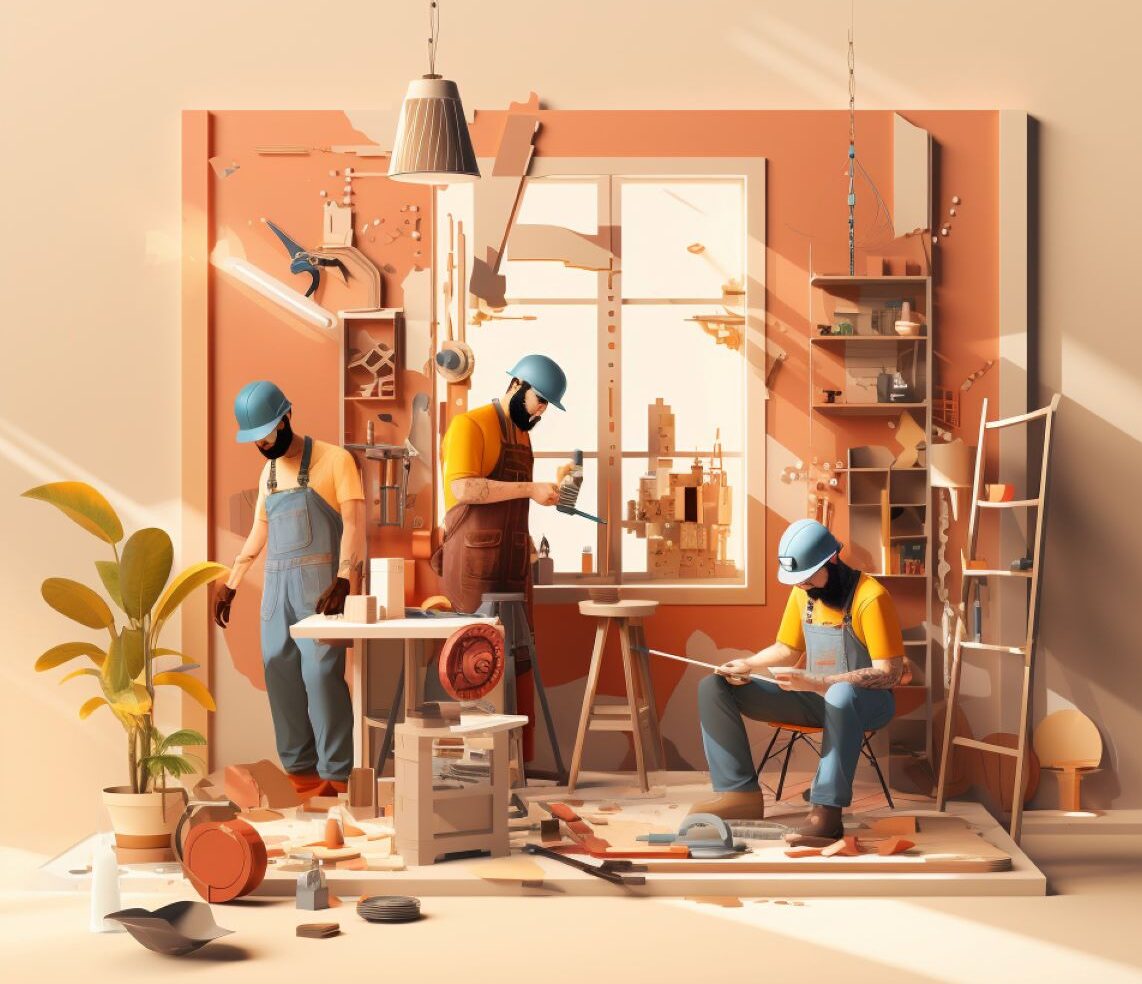
When it comes to creating a low-maintenance home, the choices you make for floors, countertops, and even exterior siding can significantly impact the amount of upkeep your home requires. Opt for materials like laminate or quartz for countertops that are stain-resistant and easy to clean, saving you time and effort in the long run.
Choosing Low-Maintenance Finishes
Selecting paint finishes that are easy to clean and don’t collect dust can help give your home a fresh look for longer periods. Stain-resistant surfaces for floors and countertops can also reduce the wear and tear on your home, making maintenance a breeze.
Selecting Durable Materials
Choosing durable materials like Fibre cement board, vitrified tiles or wood plastic composite (WPC) decking for your home’s exterior can cut down on the need for frequent repainting or repairs. These materials have a longer lifespan and require less upkeep, keeping your home looking great with minimal effort.
Opting for Easy-to-Clean & Maintain Laminates
For interior design, selecting material like laminate on doors or panelling (instead of real wood or veneers) that are easy to clean and maintain can help keep your home looking fresh and new. Laminates don’t need regular polishing or any kind of maintenance.
Also, simplifying your decor and reducing clutter can also make cleaning easier and less time-consuming, giving you more time to enjoy your low-maintenance home.
Low-Maintenance Flooring Options
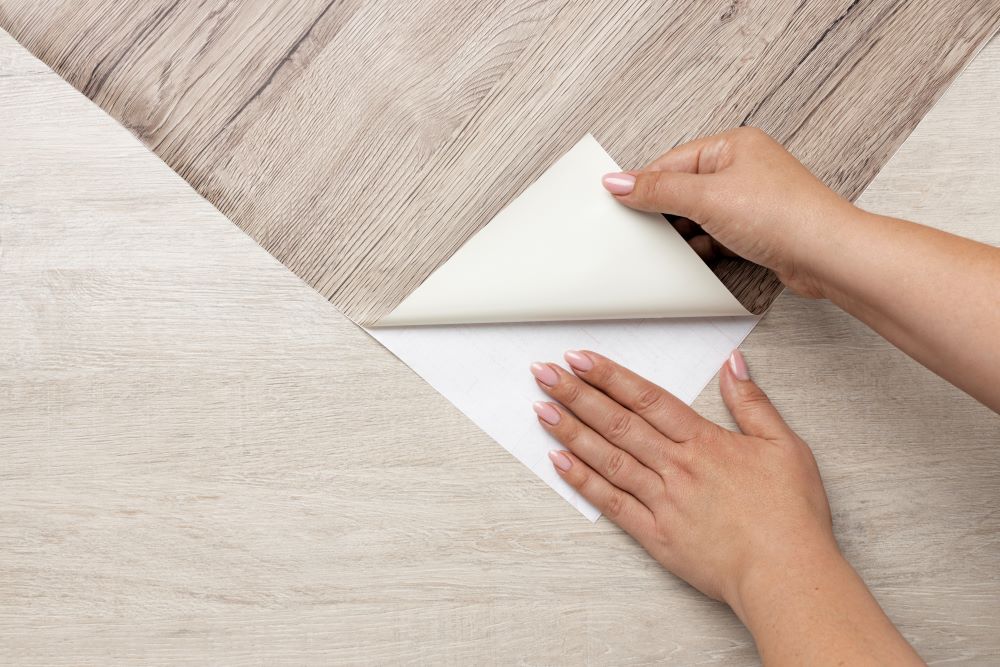
When it comes to designing a low-maintenance home, the choice of flooring plays a crucial role. Opting for laminate flooring can offer both durability and ease of cleaning. Laminate is known for its stain-resistant properties, making it a practical choice for busy households looking to minimize upkeep.
Laminate Flooring
Laminate flooring is a versatile option that can mimic the look of natural materials like wood or stone while being more affordable and easier to maintain. With its protective top layer, laminate is resistant to stains, scratches, and fading, making it an ideal choice for high-traffic areas in your low-maintenance home.
Vitrified Tile Flooring
Another low-maintenance flooring option is vitrified tile flooring. Vitrified tiles are known for their durability and resistance to stains, making them a practical choice for areas prone to spills or heavy foot traffic. These tiles are easy to clean and maintain, helping you save time and effort on regular upkeep.
Indian Granite & Stones Flooring
Indian granite and stones flooring is a luxurious yet low-maintenance option for homeowners looking to add a touch of elegance to their space. These natural materials are durable, stain-resistant, and require minimal upkeep, making them a timeless choice for both interior and exterior flooring in a low-maintenance home.
Terrazzo Flooring
Terrazzo flooring is a versatile and durable option that can add character to your home while requiring minimal maintenance. With its smooth surface and stain-resistant properties, terrazzo is an easy-to-clean flooring choice that can elevate the aesthetic appeal of your low-maintenance home without the need for extensive upkeep.
Exterior Facade Options
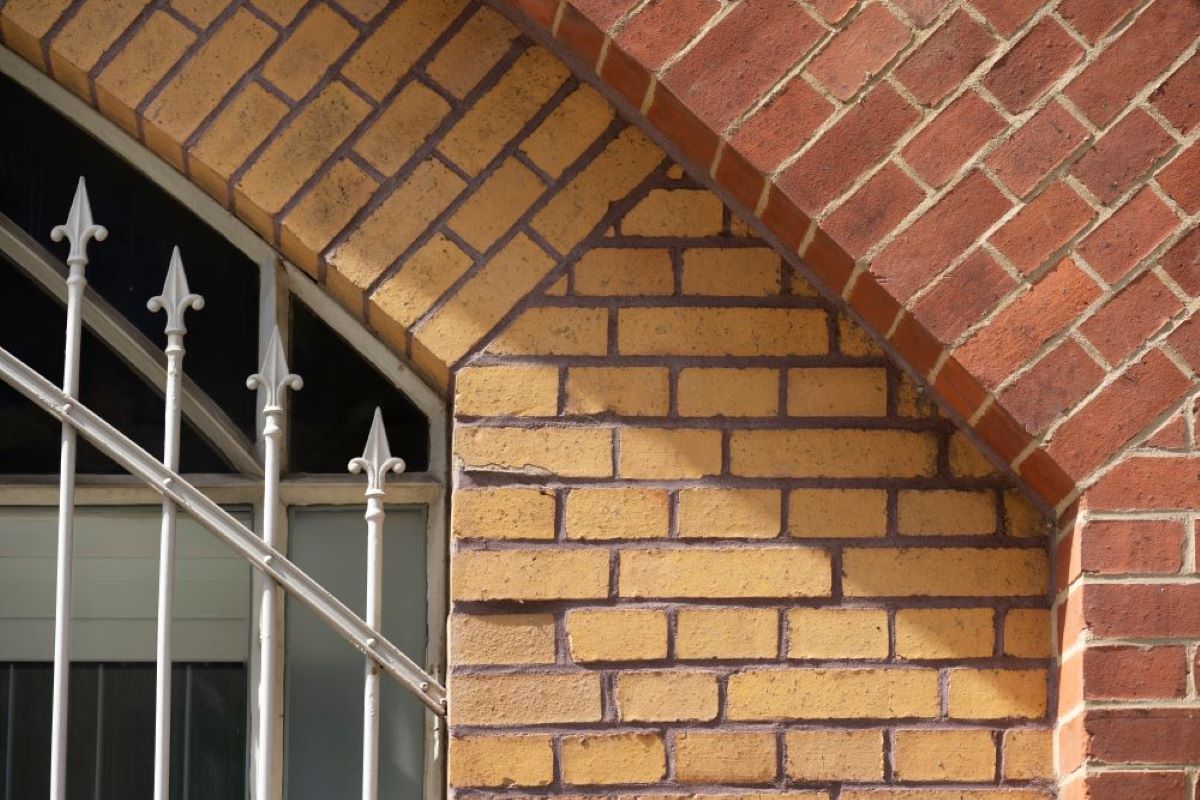
When designing the exterior of your home, choosing the right facade materials is crucial to create a low-maintenance house. Opting for durable materials like Fibre Cement Board or WPC (Wood Plastic Composite) can reduce the need for constant upkeep. Additionally, Exterior Bricks or ACP (Aluminum Composite Panels) can provide a modern look while being easy to maintain.
By choosing materials that are resistant to wear and tear, you can ensure your home’s exterior remains in top condition for years to come.
Facade Vitrified Tiles
Facade Vitrified Tiles are another excellent option for the exterior of your home. These tiles are known for their durability and resistance to stains, making them a practical choice for low-maintenance finishes. With easy cleaning and minimal upkeep requirements, facade vitrified tiles can enhance the aesthetic appeal of your home while keeping maintenance efforts to a minimum.
Fibre Cement Board
Opting for Fibre Cement Board as a facade material can offer a low-maintenance solution for your home’s exterior. This material is easy to install, cost-effective, and requires minimal upkeep, making it a popular choice for homeowners looking to create a low-maintenance home. Fibre Cement Board is also durable and resistant to stains, ensuring long-lasting performance.
WPC (Wood Plastic Composite)
WPC (Wood Plastic Composite) is a versatile material that can be used for exterior facades in low-maintenance homes. With its durability and resistance to stains, WPC provides a long-lasting solution that requires minimal maintenance. WPC can mimic the look of wood while offering the benefits of being easy to clean and cost-effective, making it an ideal choice for low-maintenance finishes.
ACP (Aluminum Composite Panels)
ACP (Aluminum Composite Panels) are a modern and stylish option for exterior facades in low-maintenance homes. These panels are lightweight, easy to install, and require minimal upkeep, making them a practical choice for homeowners seeking low-maintenance finishes. With ACP, you can achieve a contemporary look while ensuring your home’s exterior remains in top condition with minimal effort.
Exterior Bricks
Using exterior bricks for the facade of your home can provide a classic and timeless appeal while requiring minimal maintenance. Bricks are durable, weather-resistant, and easy to clean, making them a low-maintenance option for homeowners. With a variety of colors and textures available, exterior bricks can enhance the curb appeal of your home with lasting beauty and minimal upkeep.
Exterior Texture Paints
Opting for exterior texture paints is a creative way to add visual interest to your home’s facade while keeping maintenance efforts to a minimum. Texture paints are durable, weather-resistant, and easy to clean, making them a practical choice for low-maintenance finishes. With a range of textures and colors available, exterior texture paints can transform the look of your home with minimal upkeep.
Creating a Low-Maintenance Kitchen
When designing a low-maintenance kitchen, choosing the right materials, design and appliances can make your kitchen look like new for ages.

Easy to Maintain and Durable Granite Countertops
Granite countertops are ideal for easy cleaning as they are resistant to stains and require minimal upkeep. A quick wipe with a damp cloth is usually all it takes to keep them looking pristine, making them a practical choice for busy homeowners looking to reduce their cleaning time.
Low-Maintenance Kitchen Appliances
When it comes to appliances, opting for low-upkeep models can save you time and effort on maintenance. Look for appliances with durable finishes that are easy to clean and resistant to stains. Stainless steel appliances, for example, are not only sleek and modern but also simple to maintain, making them a popular choice for low-maintenance kitchens.
High Quality Hardware for Kitchen and Wardrobes
When it comes to the hardware for your kitchen and wardrobes, it’s important to choose high-quality products that will stand the test of time. Look for hardware that is durable and reliable, such as stainless steel hinges, handles, and drawer slides. These materials are resistant to corrosion and wear, making them ideal for use in the kitchen and wardrobe areas.
In addition to durability, consider the design and functionality of the hardware. Look for hardware that is easy to use and enhances the overall functionality of your space.
Investing in high-quality hardware for your kitchen and wardrobes will not only improve the aesthetics of your space but also increase the longevity and performance of your cabinets and drawers.
Efficient Kitchen Storage Design
Efficient storage design can also contribute to a low-maintenance kitchen. Installing shelves and cabinets that help you organize your cookware and utensils can make cleaning easier and quicker. By reducing clutter on countertops and floors, you’ll have less to clean and more time to enjoy your low-maintenance kitchen.
Sustainable Home Design

Sustainable home design is an important consideration when looking to build a house that has a lower carbon footprint and is more environmentally friendly. By incorporating eco-friendly home designs and using sustainable materials like reclaimed wood and recycled materials, you can help reduce the environmental impact of your house design.
Additionally, features like energy-efficient appliances, smart thermostats, and rainwater irrigation can make your eco-friendly home even more energy-efficient. When building a sustainable house, consider using passive house techniques like geothermal cooling systems that uses very little energy to cool or heat the home.
Eco-Friendly Building Materials
When considering eco-friendly building materials, there are many options to choose from. Using sustainable and recycled materials like reclaimed wood or old bricks can make your home more eco friendly while also saving money in the long run.
Utilizing renewable energy sources like solar panels on the roof can help to make your home more sustainable and reduce your reliance on traditional energy sources. By incorporating local and natural resources into your home building plans, you can create an affordable and sustainable living space that requires less maintenance over time.
Use Recycled Materials for Sustainable Home
1. Recycled wood furniture: Reclaimed wood furniture is a popular choice for sustainable home décor. Look for furniture made from salvaged wood or reclaimed lumber from old buildings, barns, or boats. This not only saves trees but also adds character and history to your home.
2. Reusing Old bricks: When old building or a house is demolished older bricks can easily be used in foundation and also for super structure. This practise will help save lot of land turning into a waste and lot of fuel in transporting demolished material.
3. Recycled metal accents: Adding recycled metal accents to your home, such as light fixtures, hardware, and decorative pieces, can give your space a unique industrial look while reducing the demand for new metal production. Look for items made from recycled aluminum, steel, or copper.
4. Recycled fabric upholstery: When choosing furniture upholstery, opt for fabrics made from recycled materials such as plastic bottles or post-consumer recycled fibers. These fabrics are eco-friendly, durable, and come in a wide range of colors and patterns.
By incorporating recycled materials into your home design, you can create a sustainable, eco-friendly living space that reduces waste, conserves resources, and promotes a healthier planet.
Use of Local Materials for Sustainability
Using local materials for construction and daily living can have a positive impact on sustainability in a number of ways:
1. Reducing carbon footprint: Using materials that are sourced locally means that less energy is needed to transport them to the construction site. This helps to reduce the carbon emissions associated with transportation and lowers the overall carbon footprint of the project.
2. Supporting the local economy: By using locally sourced materials, money stays within the community and supports local businesses and suppliers. This helps to strengthen the local economy and create sustainable, long-term employment opportunities.
3. Preserving natural resources: Using local materials reduces the need to extract resources from far-away locations, which helps to preserve natural habitats and ecosystems. This can help to protect biodiversity and reduce the impact of resource extraction on the environment.
Overall, using local materials for construction and daily living can help to promote sustainability by reducing carbon emissions, supporting the local economy, and preserving natural resources.
Energy Efficiency and Sustainability
Energy Efficiency and Sustainability go hand in hand when it comes to building your house with sustainable architecture. By opting for a smaller home with energy-efficient home features and water efficiency inside the house, you can make a big impact on the environment.
These green homes not only require little maintenance but also use natural materials and wood products that contribute to a healthier environment.
When it comes to new construction, you can choose home ideas that require little maintenance and energy from the sun to make a big difference.
Solar Panels and their Benefits
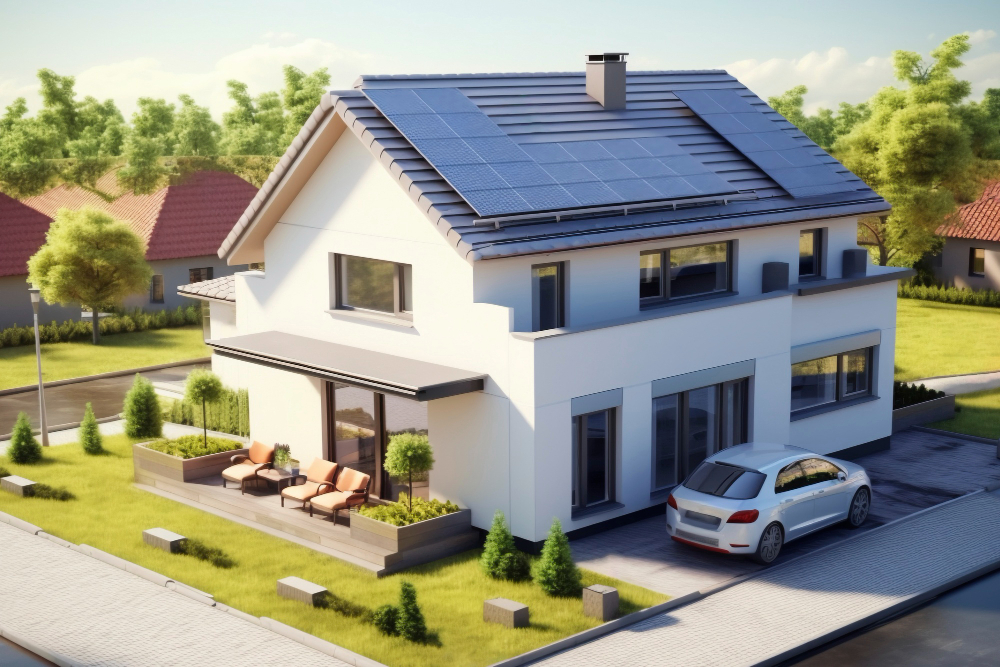
Solar panels are a sustainable and renewable energy source that convert sunlight into electricity. There are numerous benefits to using solar panels, including:
1. Environmentally friendly: Solar panels produce clean energy that does not release harmful pollutants or greenhouse gases into the atmosphere, making them an environmentally friendly energy source.
2. Renewable energy source to Lower your energy bills: Solar energy is a renewable and sustainable energy source, unlike fossil fuels such as coal and oil that are finite resources. By harnessing the power of the sun, we can reduce our dependence on non-renewable resources.
Also, you can reduce your reliance on the grid and lower your energy bills. Over time, solar panels can save you a significant amount of money on your energy costs.
3. Energy independence: Since you are not relying on grid power for your electrical needs you will enjoy a sense of energy independence.
4. Increase property value: Installing solar panels can increase the value of your property, as potential buyers are attracted to homes with solar energy systems due to the cost savings and environmental benefits they provide.
5. Low maintenance: Solar panels require very little maintenance, with most systems only needing to be cleaned periodically to ensure optimal performance.
Overall, solar panels offer a cost-effective, environmentally friendly, and sustainable energy solution for homeowners and businesses. By investing in solar energy, you can reduce your carbon footprint, save money on energy costs, and contribute to a more sustainable future.
Rainwater Storage & Harvesting for Sustainable Home
Rainwater storage and harvesting refers to capturing and storing rainwater for later use.
Rainwater storage and harvesting is a sustainable practice that can help you reduce your reliance on traditional water sources and save money on your water bills.
By collecting rainwater from your roof and storing it for later use, you can have a constant supply of water for your home and garden, even during periods of drought.
To set up a rainwater harvesting system for your home, you will need to install a rainwater collection system. This typically involves placing a large underground tank which is connected with desilting tank. Storm water from roof and balconies are connected through pipes to this desilting tank which is then connected to large storage tank.
Once you have collected rainwater, you can use it for a variety of purposes, such as watering your garden, flushing toilets, doing laundry, and even for bathing.
You can also install a filtration system to ensure that the water collected is clean and safe to use.
By collecting rainwater, homeowners can reduce their dependence on municipal water supplies, conserve water resources, and lower water bills.
Additionally, rainwater harvesting can help reduce stormwater runoff, which can reduce erosion and pollution in local waterways.
Overall, rainwater storage and harvesting is a simple yet effective way to conserve water and reduce the strain on water resources.
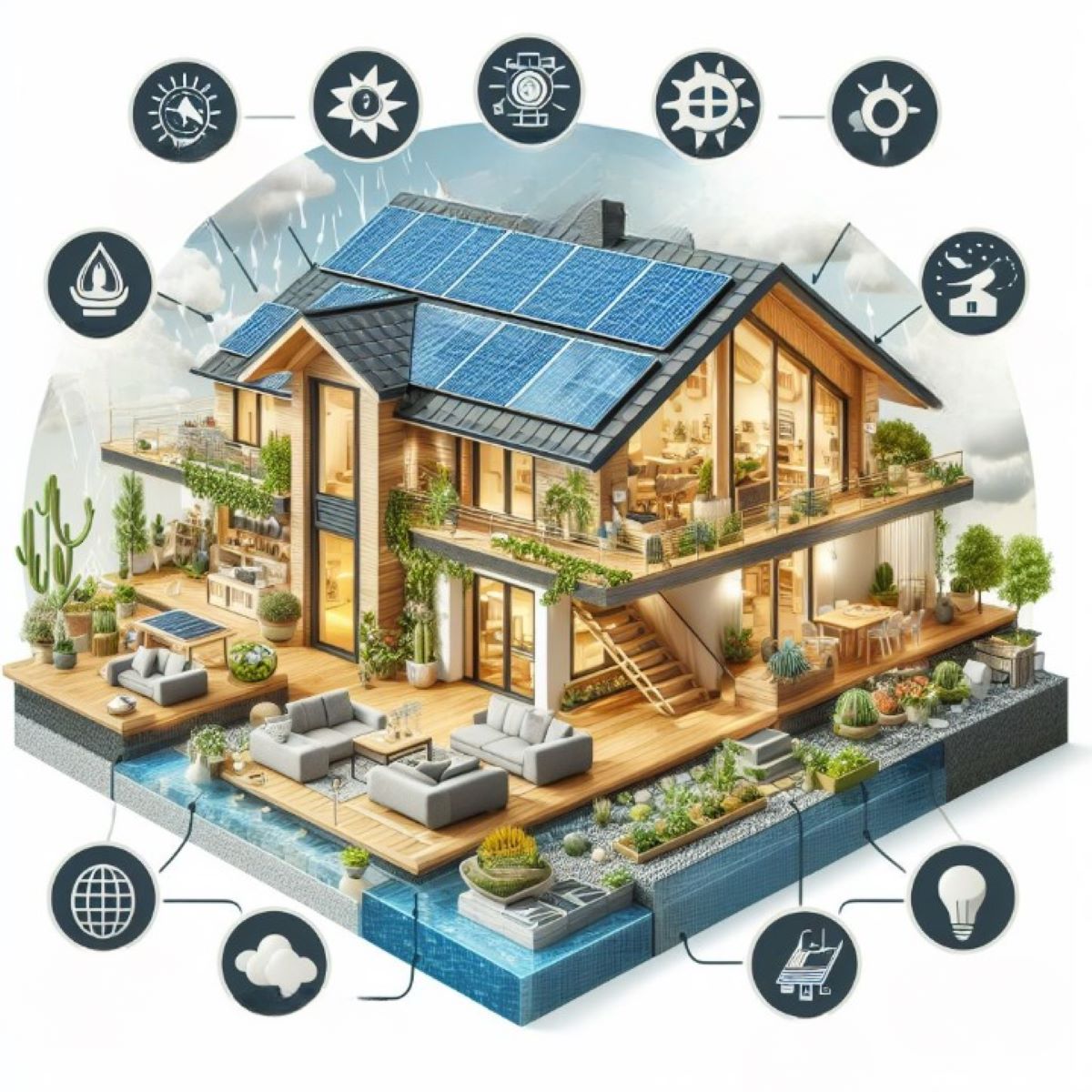
Conclusion
All of above points are green building practices which focus on creating homes that are environmentally sustainable, energy-efficient, and healthy for occupants. In conclusion following are some ways to incorporate green building practices into your home:
1. Energy-efficient appliances: Replace old, inefficient appliances with energy-efficient models. Look for appliances with the Energy Star label, which indicates they meet certain energy efficiency standards.
2. LED lighting: Replace incandescent light bulbs with LED bulbs, which use less energy and last longer.
3. Solar panels: Installing solar panels on your roof can help reduce your reliance on traditional energy sources and lower your energy bills. Many states also offer incentives and tax credits for installing solar panels.
4. Insulation: Proper insulation can help keep your home cool in the summer and warm in the winter, reducing the energy needed to maintain a comfortable temperature. Consider adding insulation to your roof, terrace, walls, and floors.
5. Low-flow fixtures: Install low-flow faucets, showerheads, and toilets to reduce water usage in your home. This can help lower your water bills and conserve this valuable resource.
6. Sustainable materials: When building your home, consider using sustainably sourced materials such as bamboo flooring, reclaimed wood, or recycled glass countertops. These materials are environmentally friendly and often have a lower carbon footprint than traditional materials.
7. Rainwater harvesting: Install a rainwater harvesting system to collect rainwater for use in irrigation or flushing toilets. This can help reduce your reliance on municipal water sources and save money on water bills.
8. Efficient HVAC system: Upgrade to a high-efficiency heating, ventilation, and air conditioning (HVAC) system to reduce energy consumption and improve indoor air quality. Regular maintenance of your HVAC system can also help increase its efficiency.
By incorporating these green building practices into your home, you can reduce your environmental impact, save money on energy and water bills, and create a healthier living space for you and your family.
